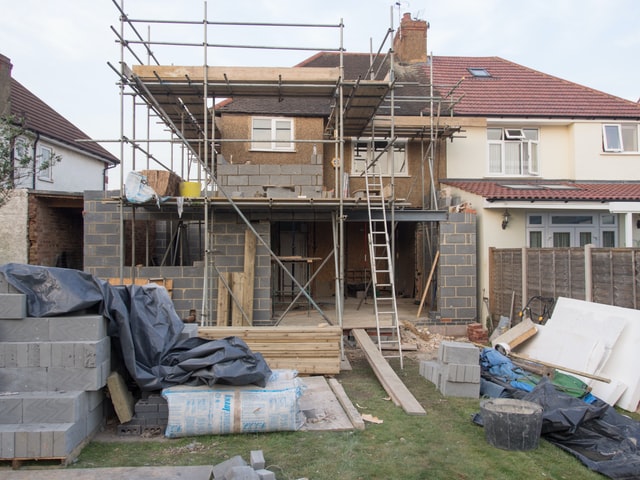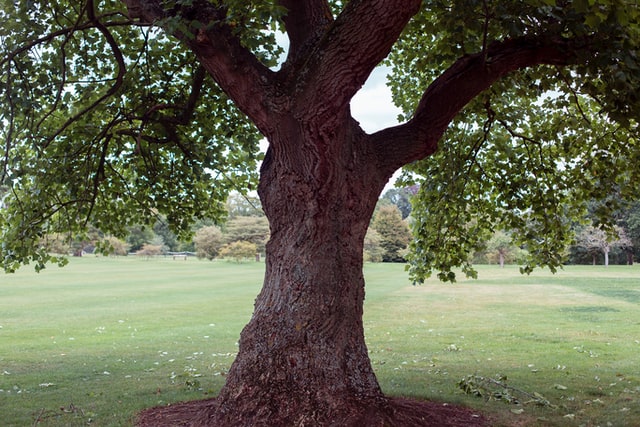Boundary disputes are among the most frustrating and confusing of issues for home and land owners. The law surrounding boundary disputes in the UK isn’t particularly clear, and it’s easy to get overwhelmed with what can initially seem like a simple issue. This guide will help you understand boundary disputes better, and what to do if faced with one.
Looking to cut to the chase? If you’re looking for a solicitor to help you resolve your boundary dispute, just call us on 0203 007 5500, or submit a contact form.
What are boundary disputes?
When neighbours can’t agree over where one property starts and the other ends, the resulting dispute is legally known as a boundary dispute. These disputes can be a nightmare ordeal for many people for one simple reason: the cost.
In fact, most boundary disputes concern tiny areas of land which are only a few inches or centimetres wide. Land which likely has no intrinsic value, but enables some form of entry or leisure use.
There’s also the human cost of falling out with your neighbour. Taking your neighbour to court doesn’t tend to lead to cordial relations afterwards.
And if you’re a flat owner and think this would never happen to you, the bad news is that boundary disputes can affect owners of any type of land or property. In fact, flat owners and owners of terraced properties can be particularly prone to party wall or boundary wall disputes.
What causes boundary disputes?
Boundary disputes arise for a variety of reasons, including:
Technical and legal issues:
- Changes in ownership of a property
- A lack of evidence to confirm property boundaries
- Lack of clarity or understanding in available legal documentation regarding property divides
- Discrepancies in methods of mapping, such as ordinance survey vs title plans
- Errors in conveyancing or by the Land Registry
- Claims of adverse possession
Physical issues:
- New extensions and building improvements
- Property or land development
- Repair or replacement of features such as fencing, pathways and hedges
- Rights of way
- Positions of pipes and drains
- The changes of physical features over time – for example, overhanging foliage
Most commonly, boundary disputes start when a neighbour tries to build up to the boundary of their land. Aside from the obvious possibility of encroachment, some title deeds will include restrictive covenants stipulating that the owner promises not to obstruct the right to ‘air and light’ of a neighbouring property.
Exactly what this means can be open to interpretation – for example, does it mean the owner must not obstruct both air or light, but can obstruct one or the other? Or what constitutes an obstruction? Is it completely blocking light, or is blocking a certain proportion acceptable?
Examples of boundary disputes
House Extensions
Extensions of any type can cause friction between neighbours. Boundary disputes can arise during the construction of extensions if they block or narrow shared accessways, or encroach into a neighbour’s garden.
Sometimes, the size and shape of the extension can deviate from the originally granted plans, leading to loss of light and enjoyment of the surrounding properties.

Trees
Landscaping works will sometimes move or remove trees and other flora. If you remove a neighbour’s tree, accidentally or not, you may be liable to replace the tree with one of equal size and age. This can cost thousands of pounds in some cases, especially if the tree is something like a centuries-old English oak.
Likewise, if a tree you own drapes over a boundary and causes damage, or it’s felled during a storm, you may find yourself with a boundary dispute on your hands.

Fencing
Damaged or rotting fences are a leading cause of neighbour and boundary disputes. When you buy a house with a garden, you’ll normally responsible for some of the fences along the boundary.
If these are damaged for whatever reason, it’s your responsibility to repair them and refusing to do so can lead to a dispute.

How to resolve a boundary dispute.
If you’re seriously considering resolving a boundary dispute, there are a good number of options available to you. Don’t rush to court in the first instance without first consulting a solicitor as you’ll likely end up spending more than you otherwise would have. Here are the steps we would always recommend:
- Speak to your neighbour. Sometimes the simplest solutions can be the most effective. If you haven’t already done so, speak to your neighbour and find out what their opinion is on the situation. Even for the largest disputes, unless you know what your neighbour is thinking, you may not be able to come up with a suitable solution.
- Mediate. You can do this formally or informally. Informal mediation may simply be agreeing a solution between you and your neighbour and putting in a plan of action. Formal mediation involves bringing in a third party mediator to oversee your discussions to try to come up with an amicable solution.
- Litigate. If you can’t agree a solution, your only option is to go to court if you want to force a remedy through. Be mindful though that this won’t be cheap for you or your neighbour. Even if you ‘win’ your case, your neighbour may retaliate in other unforeseen ways – and you’ll still be neighbours at the end of the day.
If you choose to litigate the boundary dispute, you’ll likely need to involve experts to evidence your case. It’s not enough to simply show your property’s title deed as these serve as illustrative documents only. Instead, a chartered surveyor can help identify where one boundary starts and the other ends through a boundary report. You’ll also need to review your deed to see who is responsible for what.
You’ll need to record any changes made to a boundary if successfully disputed. This is done by submitting the new details to the Land Registry. The changes are legally binding under the Land Registration Act 2002 as a Boundary Agreement.
How to determine a boundary line.
 Initially, it can be helpful to review your and your neighbour’s title deeds. These will indicate where the boundary line sits, but title deeds aren’t always accurate. Similarly, looking at the position of hedges and fences likely won’t be enough.
Initially, it can be helpful to review your and your neighbour’s title deeds. These will indicate where the boundary line sits, but title deeds aren’t always accurate. Similarly, looking at the position of hedges and fences likely won’t be enough.
If you do end up in court, you’re expected to have evidence compiled by experts. And when it comes to boundary disputes, the experts are chartered surveyors and chartered land surveyors.
Surveyors will look at multiple information sources, including:
- Measuring the land itself
- Checking the title deeds and any plans attached
- Historical documents
- Aerial photographs
They will use this information to compile a boundary report, which is used to support any arguments in a dispute.
Boundary dispute frequently asked questions.
There are some misconceptions in the UK regarding property boundaries. These can often lead to disputes with false ideas of rights or evidence. We hope to clarify some of the commonly asked questions on boundary laws below.
1. Can I remove my neighbour’s fence?
Maybe but it will depend on who is responsible for the fence. You’ll need to check your title deed to confirm this.
If your neighbour is responsible for the fence then no, you are not allowed to tamper with it without permission and vice versa. If you think the fence sits on your land, consider asking a chartered surveyor to determine the boundary.
2. Can my neighbour build on our boundary wall?
In some cases, your neighbour does have some rights to your boundary wall if it is a party wall in legal terms, meaning that the boundary line must run through it. However, if the wall is entirely on your land, your neighbour won’t have the right to build on it.
3. Who’s responsible for the garden fence?
Your title deed will mark the boundaries for which you’re responsible. This is normally denoted with a ‘T’ facing inwards to your plot. Any unmarked boundaries are the responsibility of neighbouring plots.
The title deed may dictate exactly what type of boundary structure is required, e.g. a fence or a wall, how tall the structure should be, and how it should be maintained.
However, if no such clause exists, responsibility for a fence lies with whoever’s plot the fence sits on, provided a fence exists.
4. How long do I have to challenge a boundary issue?
If you notice a boundary issue, you should try to resolve it as quickly as you can. If you leave the issue for a long time, your neighbour may be able to lay claim to part of your land. This is known as adverse possession, but it’s fairly difficult to achieve.
Boundary disputes also become increasingly complicated to trace and decode over long periods. A case will likely be much easier to resolve if handled in a timely fashion.
5. Are there fence laws in the UK?
Not specifically, but there are planning restrictions that apply to fences. In most areas, if you want to build a garden fence taller than 2 metres, you will need planning permission.
When it comes to the state of a fence, there are also no laws that dictate what condition the fence needs to be kept in. However, there may be restrictive or positive covenants in a title deed that state how a fence must be kept.
Lastly, there is no such law that states the right-hand fence of a property is the owner’s to maintain. While this is often the case, only the boundaries marked with a ‘T’ facing inwards in a property’s title plan belong to that property.
6. What’s the 7-year boundary rule?
Many people believe in a mysterious 7-year boundary rule, thinking that if you possess a piece of land for 7 years, you’re entitled to apply for adverse possession over it. However, this is incorrect.
Broadly speaking, to adversely possess land, you must show you have maintained the land in question for a minimum of 10 or 12 years, depending on whether the land is registered. While adverse possession claims do involve disputes over a boundary, they are very specific matters.











Comments
I own a terraced Regency house that I’m currently restoring. There are brick boundary walls dividing the gardens. One neighbour has an apple tree that has pushed the boundary wall in towards my garden (thus giving my neighbour more land, and me less land). Ordinarily this wouldn’t matter, but I’m constructing an outbuilding. And my neighbour says that, due to the bulge in the wall, by new building will trespass on his land. We both accept that the wall was, in 1832, built straight, and that without the recent bulge I could build my outbuilding.
Can you advise if my neighbour’s apple tree really has altered the legal boundary?
Hi Graham,
I am sorry to hear that you are having issues regarding a boundary dispute, I would advise that you give us a call on 020 3007 5500 or email us at [email protected] so that we can discuss your case in further detail.
Best regards,
Joseph Barrett
Marketing Executive
The 2 separate land boundary maps and cost dispute
In 2019, we purchased a house that had been allowed to deteriorate after its previous owner abandoned it. Recently, in 2022, our neighbor submitted their property deeds to the local council for planning permission. During this process, we discovered a concerning discrepancy - it appeared that the boundary had been shifted nearly three feet into our garden space before we purchased our home.
Upon bringing this matter to our neighbour’s attention, we were met with hostility and aggression. In fact, I was physically assaulted during one confrontation. Since then, our neighbours have engaged in a pattern of behavior aimed at intimidating us and pressuring us to vacate our home. This includes damaging our property and even sending individuals to our house with the clear intent of intimidation.
Unfortunately, we find ourselves in a situation where moving is not a feasible option due to various circumstances.
Given the severity of the situation and our limited knowledge of how to proceed, we are reaching out to seek guidance and explore our options for resolving this dispute. We are concerned about our safety, property rights, and the overall well-being of our household.
We would greatly appreciate any advice or assistance you can provide in addressing this distressing situation. Your expertise in property disputes and legal matters would be invaluable in helping us navigate this complex issue.
We live in a semi and had verbal permission to use the 10.5" strip of land next to their?extension which goes about 3yds into their garden. We have maintained this land for 24 years now. The original neighbour moved and is now dead. Our current neighbours want to rebuild the extension up to the original boundary. Is it too late to apply for adverse possession?
My problem is that my building roofing extend to the next house beside my house and my neighbor started complaining and don't know how to go about it. Please I need help
This is urgent, I need help with a boundary dispute with my mothers next door neighbour, we have had surveyors representing us and we are at the stage where we have sought to get the boundary marked out, with the neighbour. However, it now seems that the neighbour is going to pull down the fence my mother paid for previously and put in a new fence where they think the boundary should be. We have tried liaising with their surveyor but are getting nowhere. Please note there is a party wall agreement in place too, so any attempt to remove the fence post that adjoins the wall would cause the wall to be damaged, with the neighbour needing to indemnify us. We are happy to mark out the boundary line and do not feel pulling our fence down without discussion is the way forward.
Can you assist?
Hello Clare,
Thank you for your comment. We do handle boundary disputes here at Britton and Time. The best thing to do is book in a consultation with our property solicitors to discuss your dispute. To book a consultation you can call us on 020 3007 5500 or email us at [email protected]
I really need to talk with my neighbor but she's very difficult person don't know how to go about it I really need help
I have a large (high and wide) lilac hedge running down the length of my garden, forming a boundary between me and my neighbour. Due to arthritic problems, I struggle to maintain it any more, and my neighbour does nothing to help. I wish to have the hedge cut down to a more manageable height & thickness but I’m not sure if it belongs to me or my neighbour. How do I find out please ?
I need proper surveyor on my boundary line they know the boundary but they still continue to dispute the boundary line I need help with best advise
Hello Chris,
Thank you for your comment. We would be happy to provide legal advice on your boundary dispute. Please book a consultation with our property solicitors by emailing us at [email protected] or by calling us on 020 3007 5500.
We look forward to hearing from you.
Leave a comment Your email address will not be published.